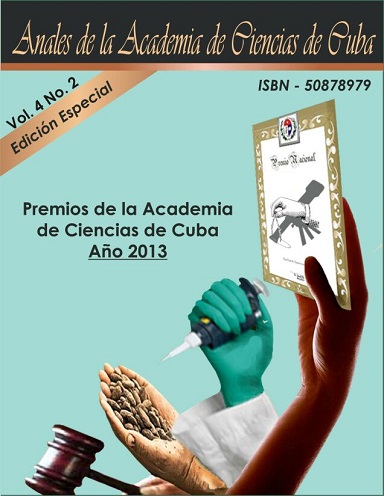Caracterización espectrofotométrica de nuevas estrellas simbióticas en el plano de la Vía Láctea
Abstract
Se presenta un método novedoso para descubrir estrellas simbióticas. Su aplicación a los datos fotométricos de IPHAS (http://www.iphas.org), constituye el primer programa de búsqueda sistemática de estrellas simbióticas en el mundo. Como resultado, se obtuvo una lista de 1180 candidatos a estrella simbiótica. El estudio del espectro de 170 de estos candidatos permitió el descubrimiento de catorce nuevas estrellas simbióticas (duplicando el número conocido en esa región del cielo), un centenar de objetos jóvenes y otros objetos peculiares como tres estrellas Wolf-Rayet, tres objetos que manifiestan el fenómeno B[e] y cuatro estrellas enanas M con elevada actividad cromosférica o coronal. Se estiman un centenar de estrellas simbióticas en la región de estudio. Con esta investigación se proyecta internacionalmente a Cuba en una línea de dominio exclusivo de países ricos, con el descubrimiento de nuevos astros (64 citas según ADS). Además, ésta constituye el primer paso significativo para determinar empíricamente y contrastar la población total de simbióticas de la Galaxia con estimaciones teóricasDownloads
Downloads
Published
How to Cite
Issue
Section
License
The journal Anales de la Academia de Ciencias de Cuba protects copyright, and operates with a Creative Commons License 4.0 (Creative Commons Attribution-NonCommercial License 4.0). By publishing in it, authors allow themselves to copy, reproduce, distribute, publicly communicate their work and generate derivative works, as long as the original author is cited and acknowledged. They do not allow, however, the use of the original work for commercial or lucrative purposes.
The authors authorize the publication of their writings, retaining the authorship rights, and assigning and transferring to the magazine all the rights protected by the intellectual property laws that govern in Cuba, which imply editing to disseminate the work.
Authors may establish additional agreements for the non-exclusive distribution of the version of the work published in the journal (for example, placing it in an institutional repository or publishing it in a book), with recognition of having been first published in this journal.
To learn more, see https://creativecommons.org






